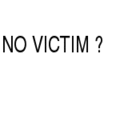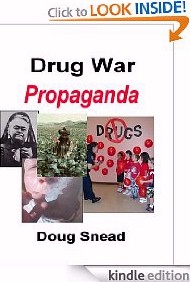Themes in Chemical Prohibition
White, W.L. (1979).
Themes in Chemical Prohibition.
in Drugs in Perspective (pp. 117-182).
Rockville, MD: National Institute on Drug Abuse,
National Drug Abuse Center.
Themes in Chemical Prohibition
The study of the historical themes in chemical prohibition
movements can provide a helpful tool in understanding those
institutionalized beliefs and myths which pose powerful barriers
to any alteration in social policy on "drug abuse."
This paper identifies the nature of those themes and presents
the author's perceptions of how these inherited belief systems
have severely limited our options for more enlightened and
effective strategies for the social control of chemical
intoxication.
Chemical intoxicants have been available to humans
in almost
all cultures since the beginning of time. Each culture through
succeeding generations has assumed the task of defining and
redefining which chemicals will be blessed, celebrated, or
tolerated and which chemicals will be forbidden, legally
prohibited, and condemned. In like manner each generation has
confronted what the policy would be toward those persons who
disobeyed the rules about the use of chemical intoxicants. The
conversion of these policy definitions into law has often
followed prohibitionist mass movements which sought through a
variety of
propaganda techniques
to instill in the culture at
large a certain set of beliefs and fears about the drugs in
question. When these movements have been effective at generating
statutory prohibition of specific drugs, this set of beliefs and
feelings toward certain chemicals and persons who use them
evolves over time to the point where they are seen as flowing
from unchallengable sources. At this stage, alternatives to the
policies that reflect these prohibitionist themes are viewed as
unthinkable.
This paper is based on the following premises:
1. Current strategies toward the use and abuse of
mood-altering drugs continue to be based on a set of beliefs
generated from the prohibitionist movements of the late 19th and
early 20th centuries.
2. The cementing of these prohibitionist beliefs into the
very social fabric of American culture is one of the primary
barriers to changing an outmoded and nonfunctional social
policy. The integration of these beliefs into our culture has
been so complete that to question them is immediately
experienced by the culture at large as an attack on the
institutions which have proliferated these beliefs, e.g., our
national leaders, the law, our educational and religious
institutions, and the family.
3. The development of national policies toward mood altering
drugs has not and cannot be intelligently addressed until we
expose and modify the irrational fears and beliefs upon which
current policies are based.
This paper will identify the nature of these inherited
beliefs and describe the manner in which they have prevented
development of a more enlightened and effective strategy for the
social control of mood altering drug use in our society.
A review of chemical prohibitionist literature reveals
eight themes which appear to emerge from the tactics of most
such movements. The tactics utilized to produce these themes are
as follows:
 1. The drug is associated with a hated subgroup of the
society or a foreign enemy.
1. The drug is associated with a hated subgroup of the
society or a foreign enemy.
 2. The drug is identified as solely responsible for many
problems in the culture, i.e., crime, violence, and
insanity.
2. The drug is identified as solely responsible for many
problems in the culture, i.e., crime, violence, and
insanity.
 3. The survival of the culture is pictured as being dependent
on the prohibition of the drug.
3. The survival of the culture is pictured as being dependent
on the prohibition of the drug.
 4. The concept of "controlled" usage is destroyed
and replaced by a "domino [gateway] theory" of chemical
progression.
4. The concept of "controlled" usage is destroyed
and replaced by a "domino [gateway] theory" of chemical
progression.
 5. The drug is associated with the corruption of young
children, particularly their sexual corruption.
5. The drug is associated with the corruption of young
children, particularly their sexual corruption.
 6. Both the user and supplier of the drug are defined as
fiends, always in search of new victims; usage of the drug is
considered "contagious." [epidemic, war]
6. Both the user and supplier of the drug are defined as
fiends, always in search of new victims; usage of the drug is
considered "contagious." [epidemic, war]
 7. Policy options are presented as total prohibition or total
access.
7. Policy options are presented as total prohibition or total
access.
 8. Anyone questioning any of the above assumptions is
bitterly attacked and characterized as part of the problem that
needs to be eliminated.
8. Anyone questioning any of the above assumptions is
bitterly attacked and characterized as part of the problem that
needs to be eliminated.
Each of the above will be reviewed looking at their
historical development and their present status.
THE PROHIBITIONIST LEGACY
The prohibitionist themes as outlined above have left a
burdensome legacy that severely limit any attempt to more
adequately and rationally address the control of chemical mood
alteration in our society. Consider the following:
1. American policies continue to be organized around
the notion of "good and bad" drugs,
although good and bad
may be couched in terms like "safe,"
"dangerous," "schedule I," 'schedule
II," and so forth. Our preoccupation with chemistry has
prevented us from focusing on the excesses of the behavior. The
question is not how do we prevent people from using
"bad" drugs - we cannot. The question is how to
provide social structures and rituals which decrease the
excesses of usage of all drugs and the subsequent high personal
and social costs of such extremes.
2. Our prohibitionist legacy has left us without a commonly
understood language to address the excessive use of all mood
altering drugs. We are left instead with an emotionally loaded
language that continues to channel our thinking into good and
bad drugs. A person receiving opiates under a doctor's care is a
"patient," a person using opiates without medical
supervision is a "drug addict," a person receiving
amphetamines from a doctor is under "medical
treatment," a person using the same amount of amphetamines
without the doctor is suffering from "drug abuse," a
physician prescribing drugs is a 'healer," a nonphysician
distributing the same drugs is a "pusher."
Chemicals received from doctors are "medicine," the
same chemicals received on the street are
"dope." A person abusing illicit drugs is an
addict, a junkie, a hype, a freak, an acidhead, a pothead, etc.
A person abusing nicotine is an ? (no word in language), a
person abusing caffeine is an ? (no word in language); a person
abusing alcohol is suffering from the "disease"
of alcoholism. To be using drugs is to be "dirty," to
be free of drugs is to be "clean."
3. The good and bad drug dichotomy has also resulted in an
artificial dichotomy in the prevention and treatment field.
There is an alcoholism prevention/treatment field and a drug
(primarily illicit) drug abuse prevention/treatment field, with
neither field addressing in any significant manner the treatment
of excessive use of prescription drugs, over-the-counter
medication, tobacco, etc. or addressing adequately the now large
group of clients who are abusing both alcohol and other drugs
either concurrently or sequentially.
4. The anti-hedonistic and abstinence stance of the
prohibitionists has also influenced Our treatment approaches. If
one looked at the amount of energy in the 1960's which went into
explaining that methadone did not produce euphoria, you would
think a cardinal tenet of treatment was that it could not be
pleasurable. Treatment has also been consistently defined as
"good" only to the point that it produced total
abstinence from all psychoactive drugs--a policy which continues
to define methadone maintenance clients as second-class citizens
on the basis of a criterion that the majority of Americans could
not meet.
5. Our preoccupation with "bad/illicit" drugs
continues to detract our attention from the overall extent of
prescribed psychoactive drug use and the increasing practice of
self medication in our culture. If one could step into the
future and look back on the major developments in chemical mood
alteration, the use of illicit drugs would appear insignificant
to the increased usage of approved over the counter and
prescribed mood altering drugs.
6. The rigid moral practice of abstinence, the basis of
prohibitionist thought, has spawned an equally rigid
anti-prohibitionist movement. Where the former saw drugs as
totally evil, the latter does not address
the real dangers in excessive drug usage.
Where the prohibitionists have demonized
the drugs, the users, and the sellers; the repeal advocates and
reformists have often demonized the laws and those who represent
and enforce them. Where the prohibitionists have implied that
many of society's problems will disappear with effective
prohibition; the advocates of repeal imply that most, if not
all, of the "drug problem" will disappear with
legalization. Where the prohibitionists see the spread of drug
use as part of a conspiracy of a foreign enemy; those for repeal
tend to see the spread of drug control laws as the product of an
internal conspiracy. Both view our present situation in
simplistic terms which totally obliterate the extreme complexity
of the issues surrounding the control of chemical intoxication
within a heterogenous and rapidly changing culture. There is
grave danger in this either/or polarization that is beginning to
take shape. Although it is important to acknowledge that our
past moral inflexibility has prevented us from accepting
potentially effective strategies which could be construed as
sanctioning illicit drug use, we must equally acknowledge that
the abdication of all controls would not improve our current
situation.
7. The continued association between crime, insanity, sexual
corruption, miscegenation, evil conspiracies, etc. and illicit
drugs makes rationally proposing policy alternatives politically
risky for anyone in a position to have those alternatives
heard.
CONCLUSION
A powerful system of prohibitionist beliefs and fears about
the currently illicit drugs has been woven into the very fabric
of our culture. It is this system of beliefs and moral premises,
more so than our technical capabilities, which severely restrict
the development of more enlightened social policies on the
excessive use of mood altering drugs.
References
[document mirrored from
http://www.druglibrary.org/schaffer/History/ticp.html
emphasis, bracketed comments, some illustrations are added]
| 




